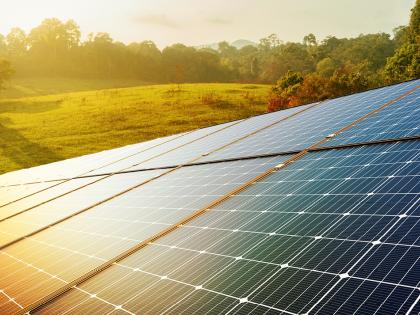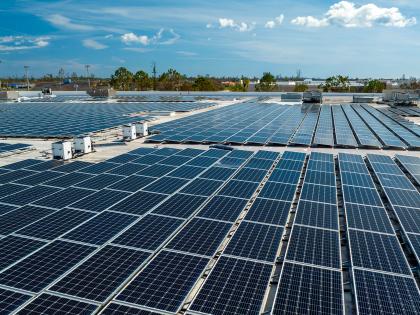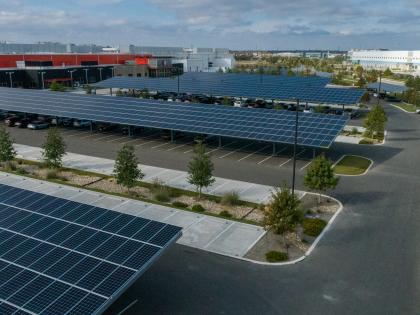The Benefits of LED Lighting for Commercial Real Estate Tenants
Save money, reduce carbon emissions and more by making the simple switch to LED lights
As environmental concerns become prominent in today’s market and green initiatives drive corporate decisions for investors and consumers, businesses are focused on reducing their carbon footprint. Commercial real estate is one of the largest contributors of greenhouse gas emissions today due to the fuel-generated electricity each asset requires.
A misconception about green initiatives is that completing sustainability projects is a complicated process which require extensive capital investment from tenants. However, there are many cost-efficient ways to significantly reduce the carbon footprint of commercial buildings. One solution that can make a substantial difference is the installation of efficient LED lighting systems. The simple upgrade from outdated lighting systems to LED can provide the tenant with operational savings, optimized lighting performance and reduction of its carbon footprint.
What makes LED lighting more efficient than other lighting?
LED lights use a process called electroluminescence to operate at a far greater efficiency than traditional lighting technologies. LEDs are 80% to 90% more energy-efficient, shine at a cooler temperature and do not contain the environmentally hazardous materials that incandescent lights do. Not to mention, LEDs last longer than any traditional commercial lighting solution.
Incandescent lights create illumination by heating a small wire filament. They get extremely hot, losing most of their energy to heat. Halogen and fluorescent lights are more efficient than incandescent bulbs yet costly to obtain.
Let's dive deeper into the many benefits of LED lighting, including their long lifespan, financial savings and reduced environmental impact.
1) Long Lifespan
LEDs should last for almost 14 years in a building which uses lighting for approximately 10 hours each day. In contrast, the longest lasting fluorescent bulbs will last for about 4 years. This improved lifespan reduces the amount of maintenance work needed to maintain adequate light in a workspace.
The average incandescent bulb lasts approximately 1,000 hours without power surges or manufacturing flaws, whereas commercial installations of halogen or fluorescent lighting may last between 2,000 hours to 15,000 hours. The average LED bulb is rated for 50,000 hours of use, multiplying the lifespan of the longest-lasting fluorescent bulbs.
2) Financial Savings
LEDs are also the most energy-efficient of commercial lighting options. By switching to LEDs, tenants could see as much as 90% improvement in their overall energy savings, which translate directly into financial savings. Between the savings on monthly utility bills and reduction in maintenance costs, LED lights can bring impactful reductions to a tenant’s operating expenses.
3) Reduced Environmental Impact
Due to their low energy consumption, LEDs contribute the least amount of carbon dioxide into the atmosphere of all lighting sources. For example, use of a simple incandescent bulb results in 4,500 pounds of CO2 annually, while LED bulbs contribute only 451 pounds of CO2 per year.
LED lights also give off very little heat compared to other types of lighting. Therefore, switching to LEDs can help reduce a building’s temperature and limit the power load on its mechanical systems. LEDs are safe to handle and install which eliminates the risks of burns and potential bulb explosions.
Start Enjoying the Benefits of LED Lighting with W. P. Carey
Installing LED lighting is one of the best solutions for companies looking to improve the sustainability of their buildings. Those leasing commercial space may be able to leverage their relationship with the landlord to explore LED installations.
W. P. Carey is a leading real estate investor with a portfolio of over 1,400 properties and recently launched a suite of sustainability offerings for tenants, including LED lighting installations. With no upfront cost to tenants, W. P. Carey will manage the design, development and implementation of LED upgrades at its portfolio properties. A more sustainable and energy-efficient commercial property is a win-win for both the tenant and the building owner.
By embracing opportunities such as LED lighting installations, tenants can save money, reduce carbon emissions and fulfill their sustainability goals. Check out a recent case study featuring an LED lighting transformation or contact W. P. Carey today to learn more!
Related Topics:
You May Also Like:

The Future Is Green
As the real estate industry evolves, sustainability continues to be recognized as a key consideration shaping investment strategies, tenant expectations and development practices. From carbon-neutral...
Financing Sustainable Real Estate Through Sale-leasebacks
Financing sustainable building upgrades can be a daunting and expensive endeavor for many businesses. The upfront costs associated with sustainable materials, energy-efficient systems and eco-friendly...